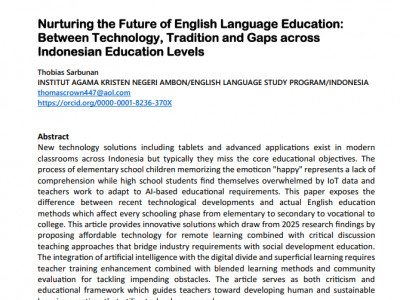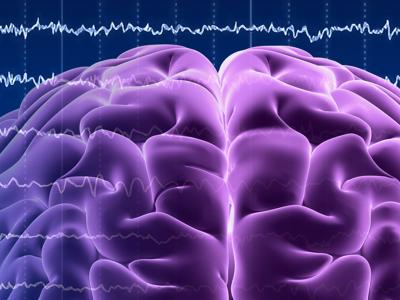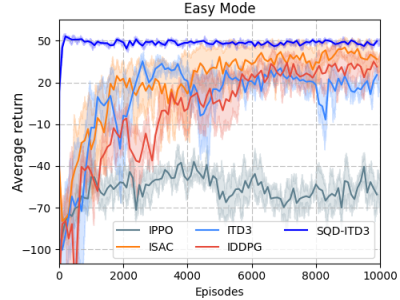Machine Learning
This data set is related to gas sensing, time-series classification. It has three columns: Time, I1, and Target. The Target column refers to the type of gas measured with the following classification:
•1 for Ammonia (NH₃)
•2 for Acetone (C₃H₆O) & Formaldehyde (CH₂O)
The data has been processed in a number of stages for accuracy and consistency. Raw data was first gathered using a Metal Oxide Semiconductor (MOS) sensor. After acquisition, the data were cleaned and processed, such as Savitzky-Golay filtering to remove noise or artifacts and smooth the signal.
- Categories:
 176 Views
176 ViewsNew technology solutions including tablets and advanced applications exist in modern classrooms across Indonesia but typically they miss the core educational objectives. The process of elementary school children memorizing the emoticon "happy" represents a lack of comprehension while high school students find themselves overwhelmed by IoT data and teachers work to adapt to AI-based educational requirements.
- Categories:
 143 Views
143 ViewsThe Fuyong dataset records 134 stroke patients who received treatment in the Shenzhen Fuyong People's Hospital between March 1, 2022, and September 31, 2024. Besides, medical records of 435 stroke patients treated in the Affiliated Taizhou People's Hospital of Nanjing Medical University between January 1, 2020, and December 31, 2023, are included in the Taizhou dataset. These two datasets use the pre- and post-thrombolysis of the NIHSS scores as a metric for evaluating the immediate efficacy of the thrombolytic intervention.
- Categories:
 224 Views
224 Views
This dataset supports the LookCursor AI project, which implements eye-tracking-based cursor control using OpenCV and Dlib. The primary file included is shape_predictor_68_face_landmarks.dat, a pre-trained model used to detect and map 68 facial landmarks essential for tracking eye movements. The dataset enables accurate facial feature detection, which is critical for cursor movement based on eye gaze.
- Categories:
 140 Views
140 ViewsThe AMD3IR dataset is a large-scale collection of Shortwave Infrared (SWIR) and Longwave Infrared (LWIR) images, designed to advance the ongoing research in the field of drone detection and tracking. It efficiently addresses key challenges such as detecting and distinguishing small airborne objects, differentiating drones from background clutter, and overcoming visibility limitations present in conventional imaging. The dataset comprises 20,865 SWIR images with 24,994 annotated drones and 8,696 LWIR images with 10,400 annotated drones, featuring various UAV models.
- Categories:
 599 Views
599 Views
A significant challenge in racing-related research is the lack of publicly available datasets containing raw images with corresponding annotations for the downstream task. In this paper, we introduce RoRaTrack, a novel dataset that contains annotated multi-camera image data from racing scenarios for track detection. The data is collected on a Dallara AV-21 at a racing circuit in Indiana, in collaboration with the Indy Autonomous Challenge (IAC).
- Categories:
 29 Views
29 ViewsThe proposed method is rigorously evaluated against several state-of-the-art algorithms, including ISAC, ITD3, IPPO, and IDDPG, to ensure a comprehensive performance analysis. The experimental data, which is publicly available [here], provides detailed insights into the training and evaluation processes of each algorithm.
- Categories:
 157 Views
157 Views
Dataset Description
This dataset is designed for analyzing and predicting comeback victories in Multiplayer Online Battle Arena (MOBA) games. It is derived from match data where an objective bounty mechanism was active, providing features that highlight differences between teams with and without the bounty advantage. The dataset is ideal for machine learning tasks, such as binary classification and feature importance analysis, and it enables researchers and analysts to explore factors influencing comeback scenarios in competitive gaming.
Dataset Contents:
- Categories:
 93 Views
93 Views





